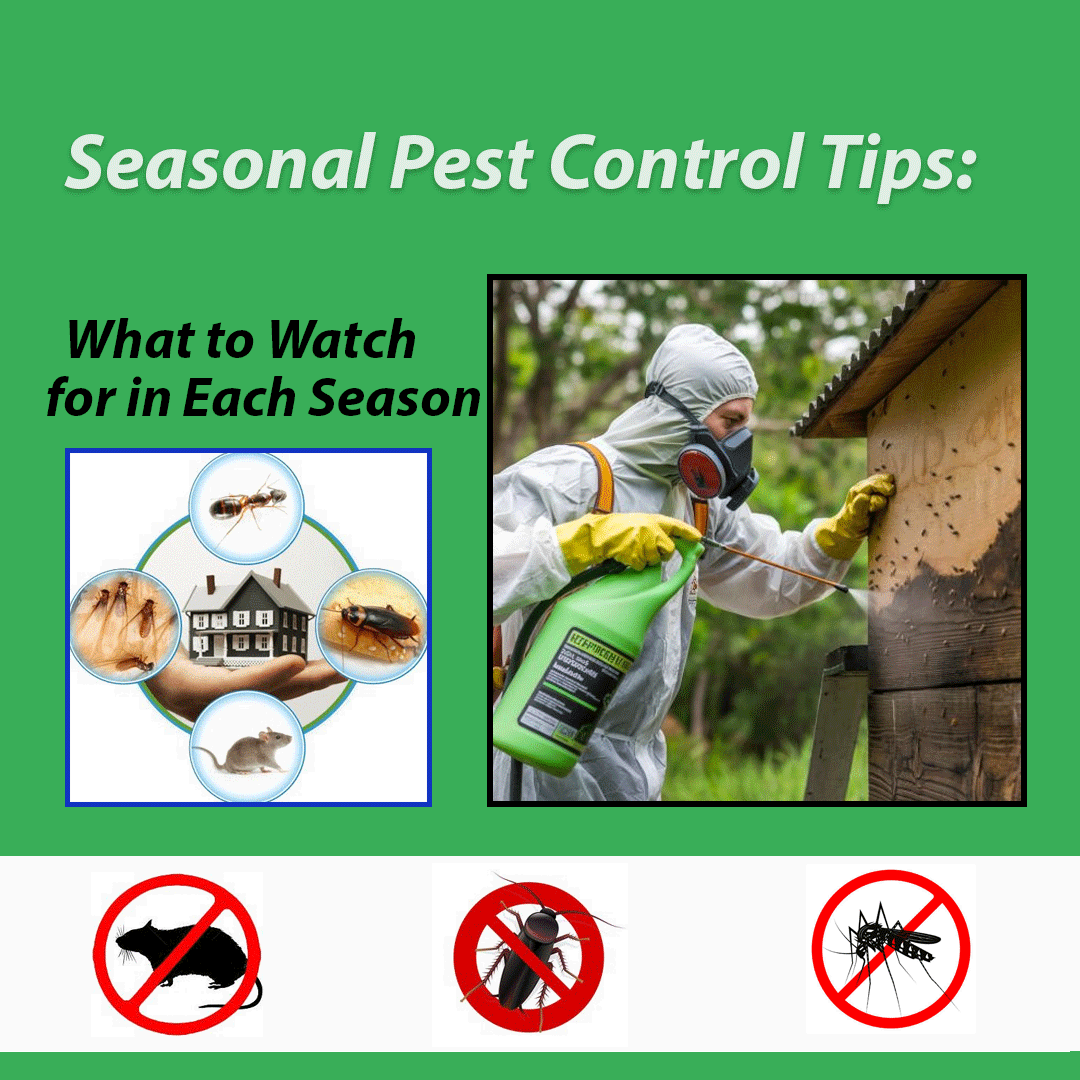
By admin / 07 August 2025
A proactive, season-specific approach is essential for effective pest control. As pest patterns change throughout the year, understanding how to safeguard your property in every season protects your home or business from unwanted invaders. Below is a comprehensive guide to the primary pests, risks, and prevention strategies for each season, ensuring you maintain a pest-free environment year-round.
Why Seasonal Pest Control Matters
As the seasons change, pest issues don't go away; they just take a different shape. Cooler months like fall draw rodents and spiders within in search of warmth and cover, while spring frequently draws termites and ants out of hiding. Because new insect risks arise with each season, it's critical to modify your pest management plan all year round. You may better safeguard your house, stop infestations, and steer clear of expensive damage or unpleasant shocks by keeping ahead of these seasonal changes.
Spring: The Reawakening of Pests
As temperatures rise and nature begins to bloom, spring also signals the return of many common pests. Insects that lay dormant during the winter become active again—breeding, nesting, and searching for food. Getting ahead of them now can save you from bigger problems later.
Here’s how to prepare your home and yard for pest season:
- Seal Up Entry Points: Walk around your home and inspect for cracks around windows, doors, and the foundation. Use caulk, weather stripping, or mesh screens to close off access for ants, termites, and other insects looking to sneak inside.
- Clear Out Yard Debris: Rake up fallen leaves, trim back overgrown shrubs, and remove piles of mulch or branches where pests love to hide. Keeping your landscape tidy limits nesting opportunities for bugs and rodents.
- Eliminate Standing Water: Even small amounts of stagnant water can become mosquito breeding grounds. Check birdbaths, plant saucers, buckets, and gutters to ensure water is draining properly.
- Look for Early Warning Signs: Spring is prime time for termite activity. Check for mud tubes along your foundation and keep an eye out for visible ant trails—these early signs can help you stop a full infestation before it starts.
- Watch for Wasp and Hornet Nests: These stinging insects often start building nests under eaves, in sheds, or behind shutters in early spring. Knocking them down now—before the colony grows—can save you from summer swarms.
Summer: Peak Pest Activity
With soaring temperatures and higher humidity, summer creates the perfect environment for pests to thrive. This is the season when insects and rodents are at their most active—breeding rapidly and invading homes in search of food, water, and shelter.
Here’s how to stay ahead of summer pest problems:
- Keep the Yard Tidy: Mow your lawn regularly and clear away leaves, brush, and other organic clutter. Overgrown grass and unkempt landscaping are prime hiding spots for ticks, mosquitoes, and rodents.
- Inspect Window and Door Screens: Make sure all screens are free from holes or tears. Even a small rip can invite flies, mosquitoes, and other flying insects into your home.
- Store Food Properly & Manage Trash: Use airtight containers for pantry items and pet food. Take out the trash often and keep outdoor bins sealed tight to deter ants, roaches, and flies.
- Monitor Outdoor Spaces: Check patios, decks, and play areas for signs of wasp nests, ant hills, or rodent burrows. Clean up crumbs and spills after outdoor meals to avoid attracting pests.
- Control Excess Moisture: Summer rains can create pooling water. Dump out kiddie pools, buckets, and any items collecting water to keep mosquitoes from multiplying.
Fall: Preparing for Unwanted Houseguests
As the air gets cooler and daylight shortens, pests like rodents, spiders, and insects begin searching for warm, sheltered places to ride out the winter—often ending up inside your home. Fall is the perfect time to fortify your defenses before these unwanted guests settle in.
Here’s how to pest-proof your home for the colder months ahead:
- Block Rodent Entry Points: Mice can squeeze through gaps as small as a dime. Inspect the foundation, roofline, and areas where utilities enter your home. Seal small holes with steel wool or caulk, install door sweeps, and cover vents with mesh screens.
- Declutter Storage Spaces: Basements, attics, and garages often collect boxes, old furniture, and other items that make ideal hiding spots for pests. Organize and reduce clutter to make these areas less inviting.
- Store Firewood Smartly: Stack firewood at least 20 feet away from your house and keep it elevated off the ground. This helps prevent termites, rodents, and spiders from nesting close to your home’s perimeter.
- Protect Pantry Items: Move dry goods like rice, flour, and cereal into sealed containers. Even small crumbs can attract pests, so be sure to wipe up spills and vacuum pantry shelves regularly.
- Seal Around Utility Lines: Examine areas where pipes, cables, and vents enter the house. Use silicone caulk, weatherproof foam, or appropriate sealants to close gaps that might offer pests an easy entry.
Seasonal Pest Control Tips for Businesses
Commercial properties—especially restaurants, warehouses, office buildings, and retail spaces—face distinct pest control challenges throughout the year. Unlike residential spaces, these environments often have higher traffic, food handling areas, and complex entry points that can attract and harbor pests if not properly maintained.
